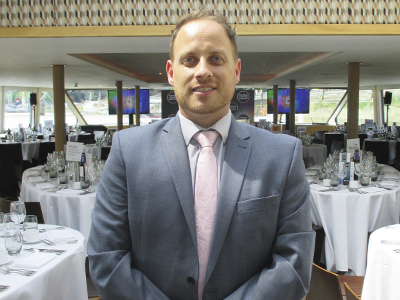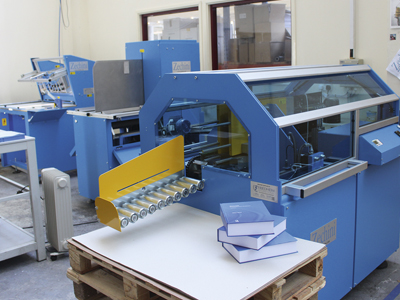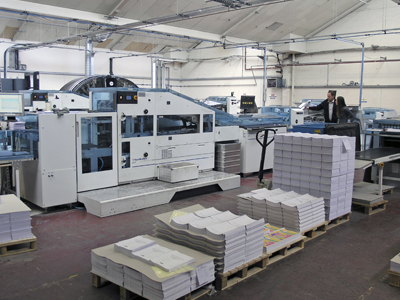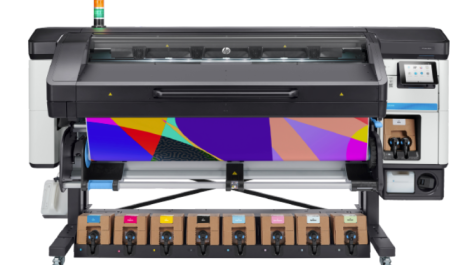Ashford Colour Press is now one of the major book printers in the UK with an annual turnover of nearly £13m. Digital Printer visited the company’s premises situated handily between Southampton and Portsmouth to see how they work.
Established as a sheet-fed litho printer in 1980, Ashford Colour Press first ventured into digital print eleven years ago. At this point current Production Manager, Jaime Layton was single-handedly running Ashford’s new digital print division.
Starting with mono cut-sheet devices, the company progressed to a mono toner-based Xerox Sedona web-fed press with a roll-to-cut-sheet line at the end. Back in 2006 cutsheet digital was a very small proportion of the company’s turnover. ‘Today, it’s around 50%,’ says Mr Layton. ‘The majority of our work is book production, but we’re moving into different market sectors; magazines, journals, brochures, and even point of sale print.’
With a 150-strong workforce operating on a 24/7 shift basis, Ashford Colour Press’s premises cover 60,000 sq/ft, housing not only litho and digital press halls but also their in-house bindery, print finishing and fulfilment operations.
In August 2016 Ashford Colour Press became the first UK based book printer to install a Domino K630i inkjet press, which it runs in-line with a Hunkeler double plough folder and cutting module, together with an Ibis Smart Binder, to produce stitched booklets and book blocks. ‘It’s been a very successful addition to our digital press room; the quality of the halftones is second to none,’ reports Mr Layton. ‘Not only has it allowed us to move mono work from other presses, creating efficiencies, it’s opened up new business opportunities too.’

Jaime Layton, Ashford Colour Press’s production manager
The company has two HP four-colour inkjet presses; a standard T230 and another upgraded to a T240 with High Definition Nozzle Architecture (HDNA) printheads. Ashford is the first UK book printer to offer this HDNA colour inkjet printing option. Aesthetically there isn’t much difference to the machinery but the upgraded version has extra venting to create more airflow around the printheads. And whereas the T230 can produce 1200 x 1200 dpi, the T240 has double that with extra banks of ink nozzles to produce a more dense high definition result. These HP inkjets enable Ashford to offer short run colour work at unit pricing comparable with the longer print runs of litho.
‘Output looks a lot smoother, sharper and solid,’ says Mr Layton, who is a Level 3-trained operator on both the HP inkjet platforms. ‘The superior HDNA quality opens up inkjet to a group of clients who would not previously have considered it as an option.’
Digital covers are produced on a four-colour toner-based Ricoh 9110, plus there’s a 9100 model. A Xerox Nuvera 200 is used for shorter run cutsheet work.
Feeding all of Ashford’s inkjet equipment are Friedheim and Hunkeler unwinders and rewinders, and the company has two Hunkeler book line solutions.
Bound for greater things
Ashford’s dedicated digital binding area includes a single-clamp binder Horizon BQ270 and a Muller-Martini Acoro in-line perfect binder with a Merit S three-knife trimmer, capable of producing around 1200 books an hour. In addition, Ashford has a Watkiss saddle stitcher and semi-automatic wiro binding lines.
For hardback titles, a Zechini book binding system was installed in September 2016, the first UK installation for the Italian supplier since Friedheim took over as distributor. Ashford selected the casemaker and book press to bring its short-run case binding in-house. ‘We looked at a number of equipment options and I really liked the Zechini for its ease of use,’ says Mr Layton. ‘With one person on each machine we can produce almost 200 books an hour.’

Ashford installed the first Zechini book binding system in the UK
Currently 2-3% of the work is casebound but it’s an area that Ashford is looking to expand to meet customer demand. ‘Having case binding in-house is a real benefit,’ notes Mr Layton. ‘It gives us more control over quality and scheduling.’
Well connected
Accredited to ISO quality and environmental standards, as well as being FSC certified, Ashford produces work for many well-known UK publishers such as Taylor & Francis, Pearson Education, Oxford University Press, McGraw-Hill and Macmillan, to name just a few. The majority is book work, mainly non-fiction, educational and academic titles but increasingly Ashford also produces magazines, journals, brochures and specialist marketing print.
The company continues to offer sheet-fed litho printing giving Ashford the flexibility needed to serve all its clients’ requirements, printing anything from a single book to over 20,000 copies. The decision to print digitally is usually based on the number of copies and page extent. ‘An average print run on the four-colour HP inkjets and the mono Domino inkjet is around 250 copies,’ Mr Layton explains. ‘But we have gone up to 6000 copies digitally for extents of around 120 pages. We’re always flexible and aim to produce books in the most cost effective way for our clients, but normally around 2000 copies would be the maximum on these presses.’
And the minimum run length? ‘Generally 50 copies on the inkjets but we have developed processes which mean that we can produce single copy book orders, these can even be personalised, with customised content unique to each book order.
‘We work very closely with our major clients providing bespoke “Connected” services such as automatic replenishment of stock (ARP). Client stock levels are preset and when the agreed stock limit for a title is reached, an order is automatically triggered to print more copies,’ he continues. ‘Using system to system communication the orders are received electronically and our software automatically puts the job into production. We can track the order progress throughout the factory within our Solprint MIS system.’
Optimum productivity
Every Friday six hours are assigned to thoroughly checking, cleaning and re-greasing all the digital equipment. ‘It’s preventative maintenance, essentially,’ explains Mr Layton, we’ve seen a huge upturn in our productivity just through doing that. You’re not going to catch everything but our uptime on our HP presses averages about 97%, running 24/7.’
Ensuring optimum productivity is key to ensuring the company continues to build on its success and achieves plans for growth and product extension.
Ashford is always looking to the future. ‘We aim to be innovative in how we can produce work and anticipate our clients’ future needs; challenging ourselves to see if we can do it quicker, smarter, leaner, or even produce something in entirely new way. That in turn motivates me and my production team to look at different areas that we could potentially venture into with new equipment or software solutions,’ explains Mr Layton. ‘We’re always striving to improve so the business continues to grow and succeed.’
Read the full August issue here





